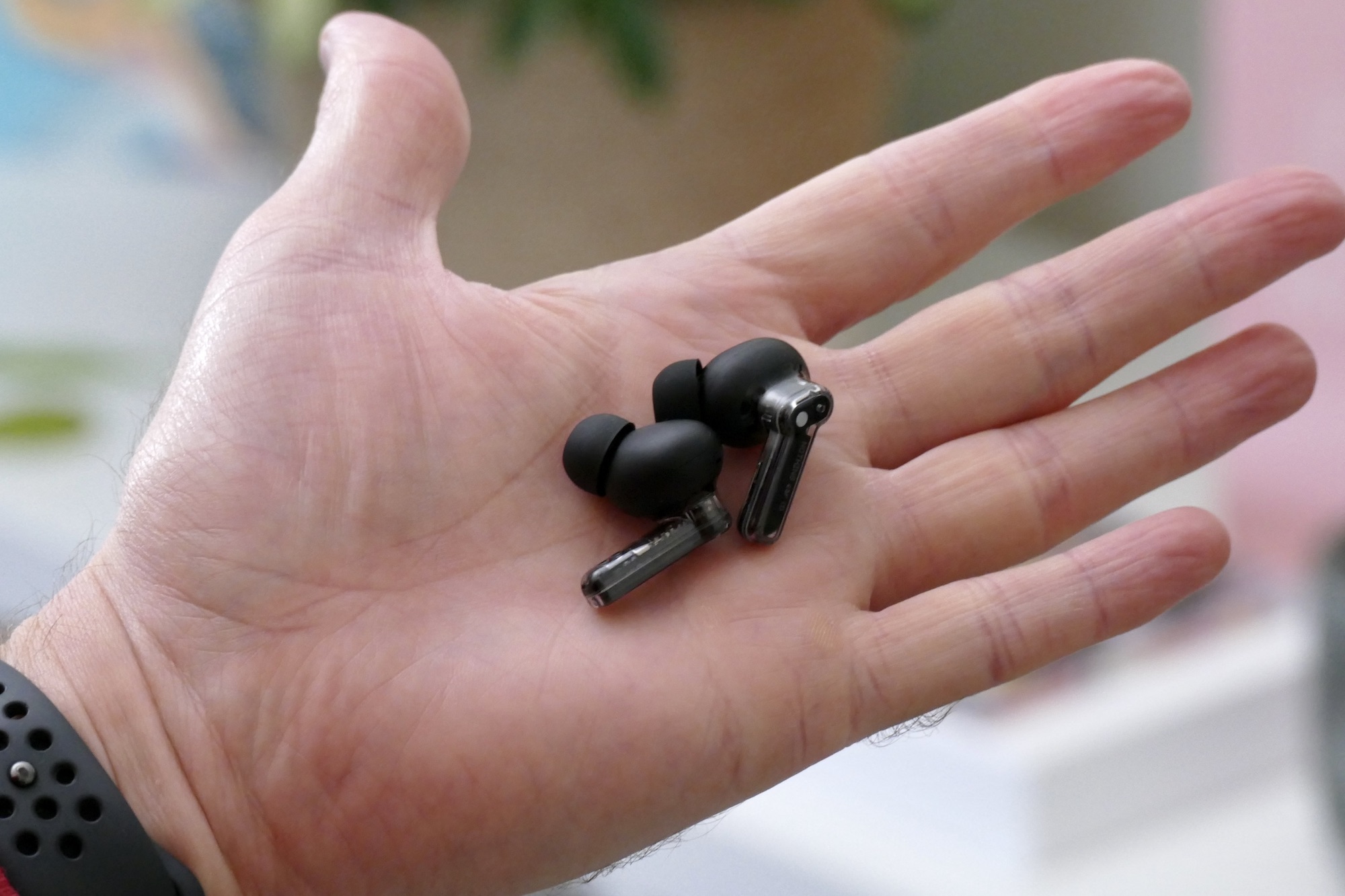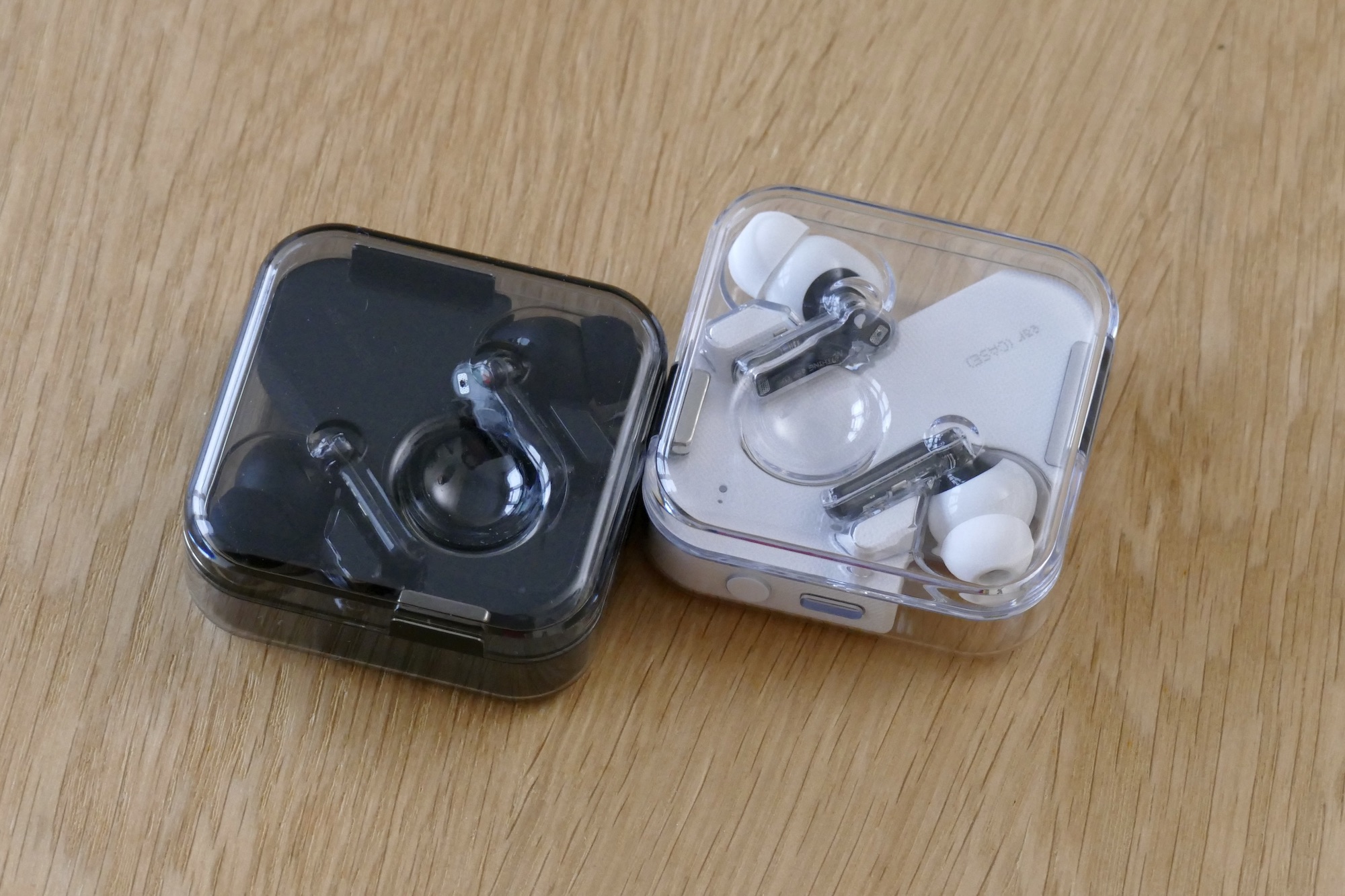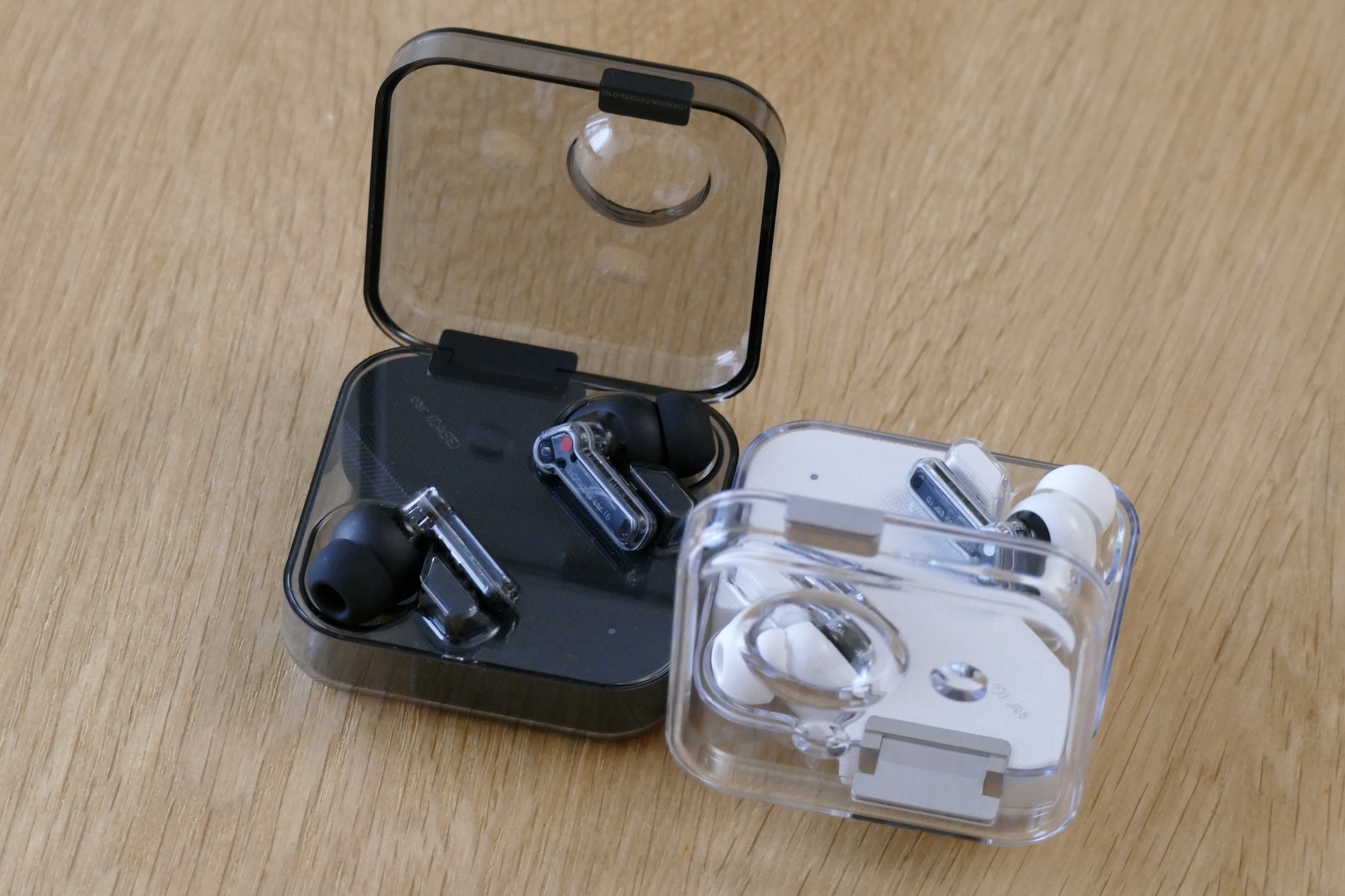Are the Nothing Ear 1 true wireless headphones, in that ice-cool white and transparent finish, a little too stark-looking for you? If so, then you’ll probably really like the new version just announced. This is the Black Edition of the Nothing Ear 1 in-ear headphones, and while they retain the trademark transparent casing, the white color has been replaced by black for a stealthy aesthetic.
What’s new?
The Nothing Ear 1 Black Edition has a classy mix of dark shades, with the body of the earbuds in matte black with gloss black collars, and the transparent plastic over the stems adding shine to the black components inside. The case’s transparent lid is now smoky black rather than completely transparent, the molded inner section is black, and the various metal parts that were polished on the first version, are also in black to complete the theme.

There’s another, arguably more important thematic reason for the introduction of the Black Edition, as the company has also announced the Ear 1 is carbon neutral. Nothing has worked with several third parties to assess the headphones, and will add the 1.78kg carbon footprint data to the Ear 1’s latest packaging.

The Ear 1’s audio and charging technology are still the same though. That means sound is delivered through a pair of 11.6mm drivers inside the IP54-rated ‘buds, complete with Active Noise Cancelation (ANC), three microphones that cancel out wind noise during calls, Fast Pairing for Android phones, wireless charging for the case, and up to 34 hours total use time. Just under six hours of use is expected from a single charge.
Listening to the Black Edition
The Nothing Ear 1 in-ear headphones were released in August and we gave them a glowing review at the time. The release of the new Black Edition is a great time to revisit the Ear 1’s to see if they still impress. I picked up a few other sets of in-ear

The Nothing Ear 1’s have a bright sound and a wide soundstage but are slightly lacking in bass using the default sound profile. And while the vocals sound good here they lack the power I’d ideally like to hear. Samsung’s $199 Galaxy Buds Pro get the baseline just about right and are just as bright as the Ear 1, but are generally more controlled, balancing the vocals with the rest of the track more successfully.
Apple’s $249 AirPods Pro are warmer, but also struggle to really bring the vocals to the forefront. However, they remain a very pleasurable listen. The $189 Adidas Z.N.E. 01 ANC are bass-heavy and although the vocals are central in the soundstage, they get lost among the unnecessarily amped up bassline. Bang & Olufsen’s $400 Beoplay EQ are by far the best here, as you may expect considering the price difference, with a controlled bass thump, sparkling vocals, and a wonderfully wide soundstage.
After listening to the Beoplay EQ’s I swapped back to the Nothing Ear 1 Black Edition, and the brightness was the most noticeable difference, along with less controlled handling of the high-pitched vocals. When I listen to spoken word or make calls with the Ear 1’s, they perform just as well as all the others on the list. They are definite competitors to the Apple and Samsung ‘buds, much better than the Adidas earbuds, and although they can’t take on the wonderful sound of the Beoplay EQ’s, it’s extremely hard to recommend paying another $300 just to get them, unless you’re really into the best sound you can get, price-no-object.

This is really where the Nothing Ear 1’s win, as combined with the excellent comfort — they are so light you can wear them for hours with no fatigue — great ANC, wireless charging, and decent battery life, the $99 price makes them not only very tempting, but a shrewd purchase in the jam-packed world of true
How to buy the Nothing Ear 1 Black Edition
The new Nothing Ear 1 Black Edition will be available from December 13 through Nothing’s own online store and through its retail partners, for $99 or 99 British pounds. Additionally, if you’re in London you can try to grab a pair of the first 100 models to be released, each individually engraved, from a special pop-up location in Seven Dials, Covent Garden from December 4. Because there are only 100 available, you’ll probably have to be quick to get them.
Nothing is also adding a new way to pay for the Ear 1 Black Edition: Cryptocurrency. In the U.S., the U.K., Japan, Canada, and various European countries including Germany, France, Italy, Spain, and Switzerland, Bitcoin, Ethereum, USD Coin, and Dogecoin will all be accepted through Nothing’s online store.
Editors' Recommendations
- Nothing’s new earbuds upstage Apple, Google, and Amazon by embedding ChatGPT
- JLab jumps into hi-res and Bluetooth LE audio with $200 Epic Lab Edition earbuds
- 1More’s new wired earbuds pack five drivers and planar tech for $170
- You can stick Nothing’s Ear Stick earbuds in your ears for $99
- Nothing teases its next wireless earbuds with photos of a lipstick-like case








